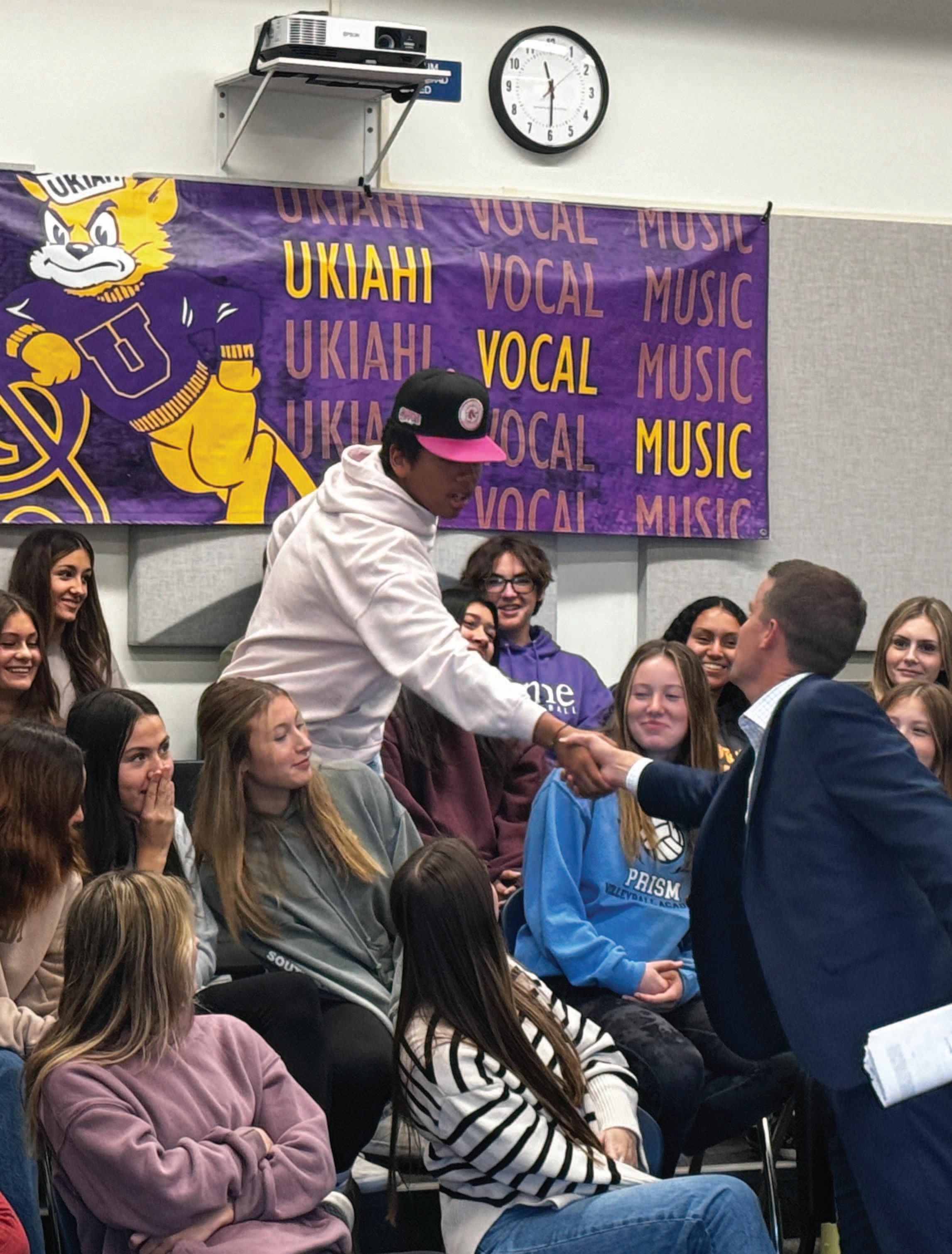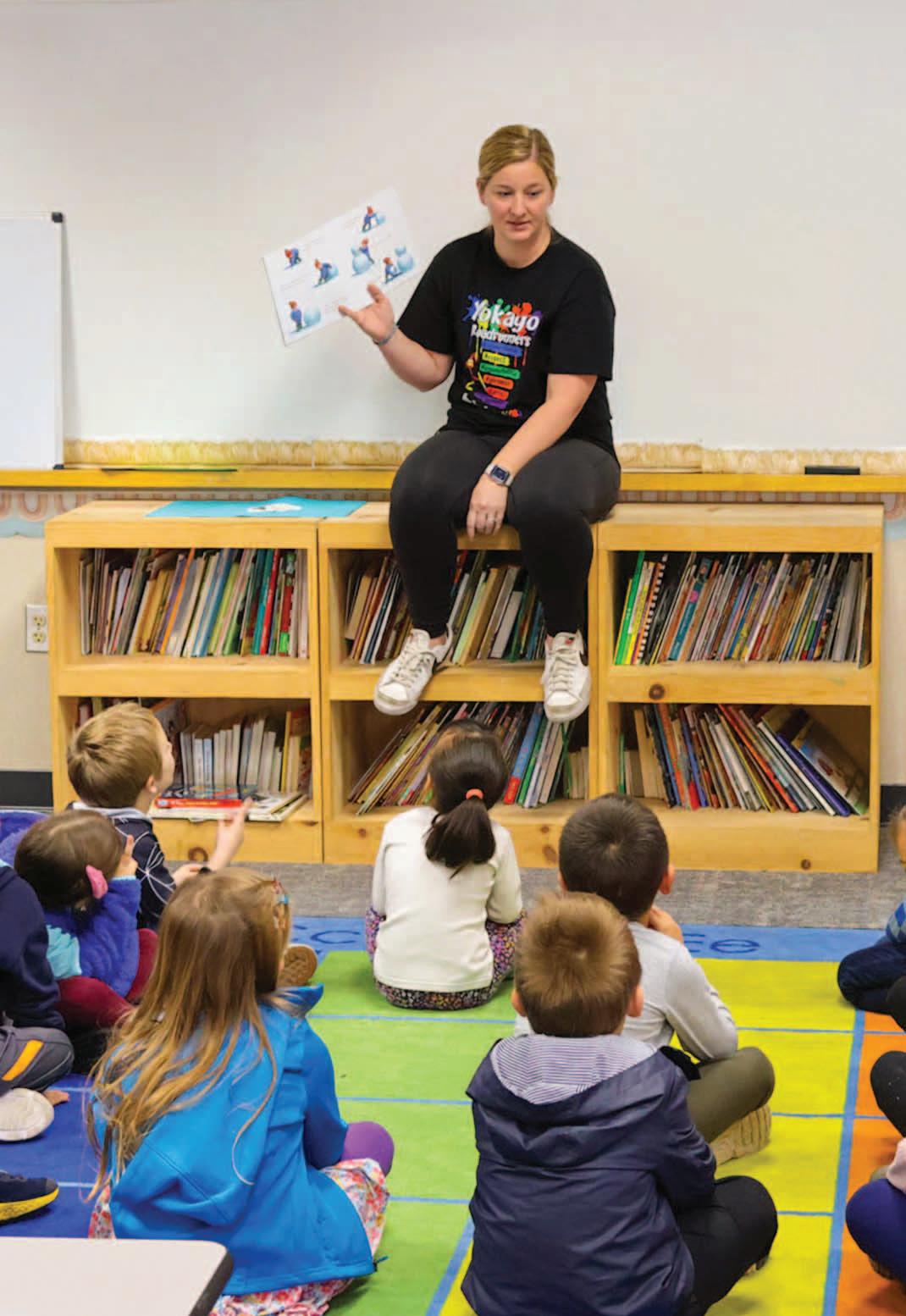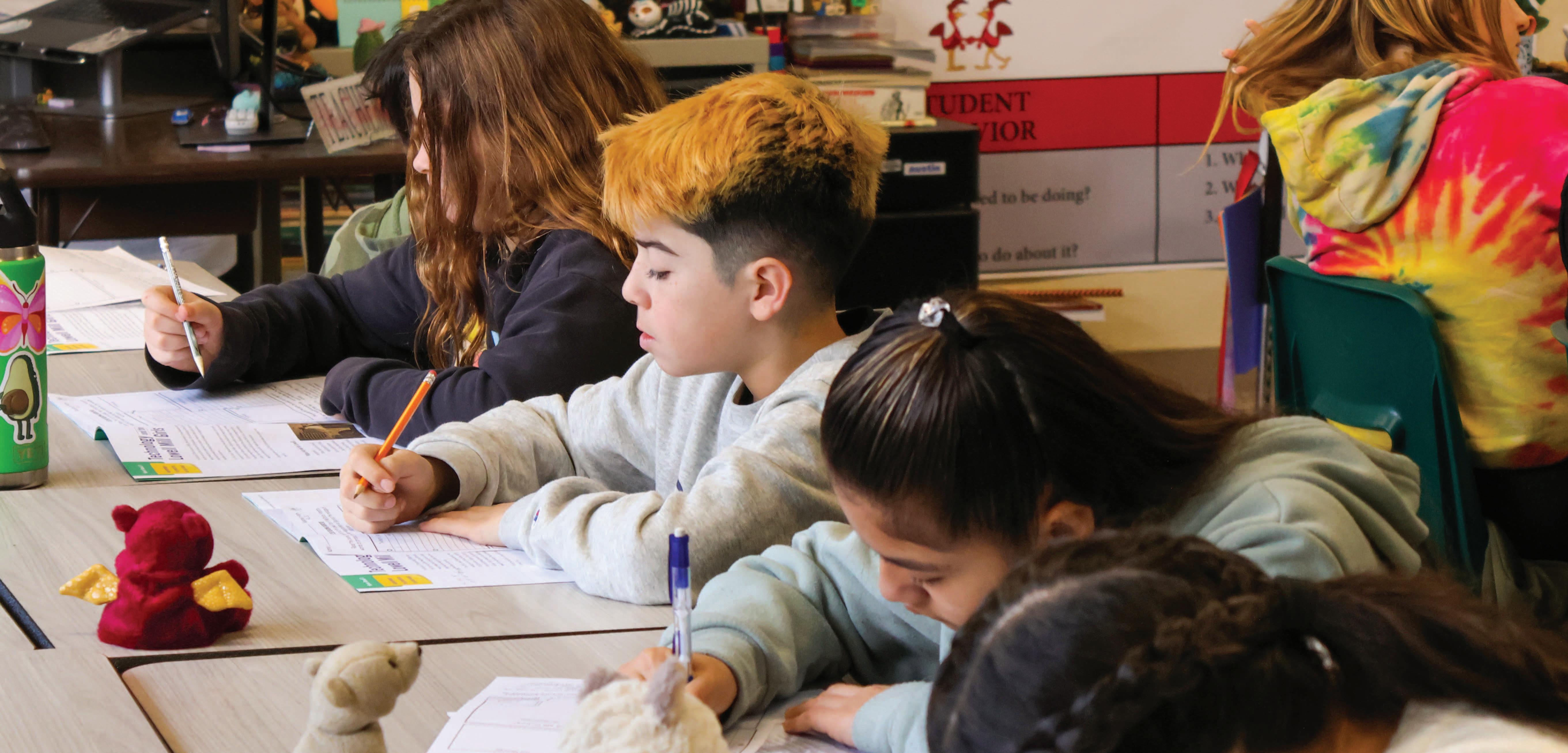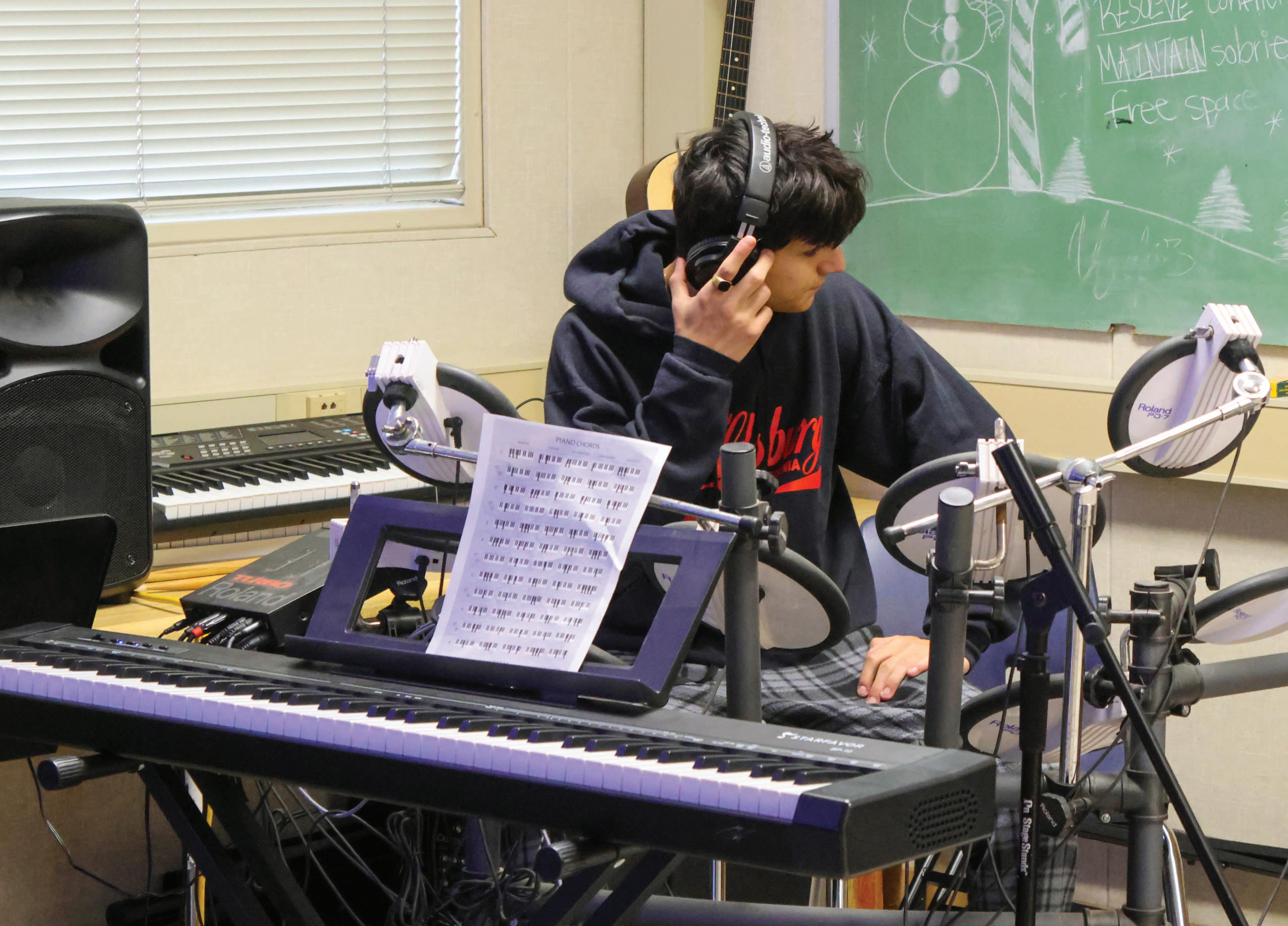MISSION: To guide each student's unique educational journey toward excellence.
VISION: Education is a transformative journey for each student and their family. Focused on exceptional teaching, we foster intellectual and personal growth guided by high learning standards. Our vision is to equip every student with the skills and understanding necessary for adulthood and the ongoing journey of lifelong learning.
GOAL:
For every student to graduate College and Career Ready
Our objective is to ensure that every student achieves at least a year's worth of academic growth annually, with additional focus on students who are behind to make more than a year’s growth annually, thus preparing them for college and career success.
How
we’ll measure performance
We’ll measure the annual academic growth of each student in Ukiah Unified, ensuring that every student demonstrates at least one year's progress within a year's time frame and those who are not yet at grade level make more than a year’s progress in a year.
By June 2029, our data will meet or exceed state averages overall and for each significant subgroup. Each year, growth targets will be calculated based on the distance to the state average.
Ukiah High School students discuss contemporary issues with Senator Mike McGuire.
BASED ON OUR VALUES:
Excellence: We focus on excellent teaching and fostering engaging classrooms as our educational foundation. We embrace high standards to develop student confidence and capability, igniting a passion for learning. Our approach, guided by a team of innovative and compassionate educators, equips students with the skills needed for success.
Partnership: We prioritize the student-staff partnership as the cornerstone of our educational approach. We acknowledge the invaluable support families, community members, and diverse organizations bring to this partnership. Collaboration enriches the learning experience, blending knowledge, social skills, and inclusivity to prepare students for modern society.
Innovation: We champion innovation to enhance student learning. Encouraging informed risk-taking and creative approaches, we integrate novel methods and technologies to make learning engaging and effective. Our commitment to innovation guides educators in adapting to the evolving needs of students, fostering an environment of curiosity and meaningful growth.
Culture of Learning: We believe all students can learn at high levels. We cultivate a culture of learning where education is embraced as a continuous journey. Valuing the role of educators and families, we recognize each student's unique educational path and offer diverse pathways for success. Our commitment to lifelong learning inspires joy in both teaching and learning, fostering a community where knowledge and growth are celebrated.
STRATEGIC PRIORITIES
With nearly 1,000 employees across over a dozen locations and serving students from TK-14, achieving our goals requires strategic prioritization to guide the entire district in the same direction. These are those priorities.
Priority 1: Delivering High-Quality Initial Instruction and Tailored Assistance through Multi-tiered Systems of Supports (MTSS).
Our focus is on providing all students with the most effective and engaging instructional methods from their first learning experience, then building upon it with additional layers of support to address the varied needs of our students. These are research-supported professional practices of First Best Instruction and Multi-tiered Systems of Supports (MTSS).
Measuring Success:
Increase the graduation rate.
Exceed the state average for students completing A-G requirements.
Increase the number of graduates completing a Career and Technical Education (CTE) pathway.
Increase the number of graduates completing both A-G requirements and a CTE pathway.
Increase the number of students taking Advanced Placement (AP) exams and scoring 3+.
Improve learning and engagement as shown by state and interim assessments.
Increase the percentage of students at or above benchmark in Acadience reading.
Raise the number of students meeting or exceeding standards in Smarter Balanced Assessment Consortium (SBAC) English Language Arts (ELA) and Math in grades 3, 5, 8, and 11.
Increase the percentage of graduates who are College Ready in ELA and Math on SBAC.
Decrease the number of D/F grades in middle and high school.
Increase equitable enrollment in AP, honors, and dual enrollment courses, including for students with disabilities.
Priority 2: Supporting all Emergent Multilingual
Learners in Obtaining English Language Proficiency and Mastery of the Core Content Standards. Our focus is on increasing the reclassification of Multilingual Learners by the end of elementary school, reducing the number of Long-Term English Learners (LTEL) in secondary school, and improving academic language proficiency and academic achievement to ensure English Learners are college and career ready.
Measuring Success
Help more English learners improve their English skills as measured on the CA School Dashboard English Learner Progress Indicator (ELPI).
Increase the number of English learners who become proficient in English on the English Language Proficiency Assessments for California (ELPAC).
Increase the number of English learners reclassified as proficient.
Help more English learners achieve proficiency in ELA on state tests.
Improve attendance and reduce chronic absenteeism among English learners.
Increase graduation rates for English learners.
Priority 3: Elevating Educator Expertise and Collaboration through Enhanced Professional Learning Communities (PLCs) and Targeted Professional Development in Math and Literacy Instruction.
Our priority is to strengthen Professional Learning Communities, creating a collaborative environment for educators to share and refine teaching strategies to improve student learning. We will concentrate professional development efforts on math and literacy instruction and first best instruction. This focused approach will ensure our educators are well-equipped to deliver high-quality education in these foundational areas, essential for long-term student success.
Measuring Success
Decrease teacher misassignments and increase properly assigned teachers.
Implement effective, ongoing professional learning for all teaching staff.
Measure PLC effectiveness through staff surveys.
Ensure PLC time is productive and focused on key questions.
Clarify the standards sequence for each course/grade level.
Use learning targets and “I Can” statements.
Use Common Formative Assessments (CFAs) and academic data to reteach and support students.
Share effective teaching practices identified through CFAs.
Measure PLC effectiveness through administrator surveys and learning rounds.
Improve performance on statewide tests for all students and subgroups.
Increase writing scores on SBAC ELA for all grade bands.
A Growth Mindset for Students and Ourselves.
Priority 4: Cultivating a Districtwide Safe, Positive, and Healthy Climate and Culture for Students, Teachers, and Support Staff.
Our priority is to maintain an environment across all schools in the district where safety, positivity, and health are paramount, ensuring that every student, teacher, and staff member feels supported, valued, and secure. By focusing on the core elements of safety, positivity, and health, the district will foster a nurturing and inclusive atmosphere conducive to effective learning, professional growth, and overall well-being, where the entire school community feels supported, valued, and secure.
Measuring Success
Maintain 100% of schools with a score of fair or higher on the Facilities Inspection Tool (FIT).
Progressively decrease suspension and expulsion rates with emphasis on socio-economically disadvantaged, Native American, and Special Education students.
95% or more students indicate they feel safe at school (campus culture survey).
Decrease middle school dropout rate.
Decrease high school dropout rate.
Decrease chronic absenteeism rate by 5% annually until the rate is consistently 10% or less.
Meet or exceed a 95% attendance rate for all students.
Priority 5: Fostering Positive Staff-Student Connections to Ensure a Sense of Belonging at School.
Our goal is to nurture a positive and healthy climate across all school sites, with a focus on fostering positive staff-student connections. This approach aims to ensure every student feels a deep sense of belonging and engagement within the school community.
Measuring Success
Increase the percentage of secondary students who indicate that there is a staff member who knows them as a person on campus (student survey and interviews).
Increase the percentage of students who enjoy coming to school on most days (student survey and interviews).
6. Priority 6: Strengthening Collaborative Partnerships Among Families, Caregivers, Teachers, Support Staff, and the Community.
Our focus is on building collaborative relationships with families, caregivers, staff, and the community to support our strategic goal of at least one year’s academic progress per school year for every student. We aim to create a supportive network that directly contributes to enhanced learning outcomes and academic success for all students.
Measuring Success
85% or more parents and caregivers indicate that teachers and staff ask for their input about concerns, interests, and goals related to their child’s learning and environment (family survey).
85% or more of parents and caregivers say they feel welcome at their child’s school (family survey).
Increase the number of District English Learners Advisory Committee (DELAC) and District Advisory Committee (DAC) parents who attend Strategic Plan/LCAP input meetings.
We thank members of the Guiding Coalition, the District Advisory Committee, and the Board of Trustees for their collaboration in creating our Strategic Plan. These groups, comprised of students, parents, teachers, administrators, and community members, generously donated their time and expertise over the last school year. We express our sincere gratitude for their dedication and essential contributions.

















